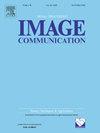一种基于像素解洗和颜色校正的有效去雾方法
IF 2.7
3区 工程技术
Q2 ENGINEERING, ELECTRICAL & ELECTRONIC
引用次数: 0
摘要
雾霾、暴雨等恶劣天气条件会导致观测图像的严重退化,影响目标检测等高级视觉任务的性能。然而,现有的图像处理方法大多侧重于去雾,而忽略了图像颜色和细节的恢复。本文通过大量实验发现,RGB图像中某一点像素的RGB三个通道的方差与其对应的色彩亮度程度有关,并提出了一种高效的去雾方法PUCCNet,该方法利用pixel Unshuffle和color Correction增强图像细节信息,提高色彩饱和度。我们在网络中设计了一个细节恢复块(DRB),通过注意机制捕获输入图像的细节,并关注局部细节。在网络的高维部分,引入深度局部全局残差块(deep Local Global Residual Block, DLGRB),可以同时处理局部和全局特征,从而增强模型的表达能力,提高模型的泛化能力,降低过拟合的风险。该网络通过注意机制获取局部细节,并通过色彩校正使输出图像质量更高,与人类视觉系统保持一致。在合成数据集和真实世界数据集上进行的大量实验表明,所提出的方法优于现有的最先进的方法。本文章由计算机程序翻译,如有差异,请以英文原文为准。
An Efficient Dehazing Method Using Pixel Unshuffle and Color Correction
Severe weather conditions such as haze and rainstorm will lead to serious degradation of observed images, which will influence the performance of advanced visual tasks such as target detection. However, most of the existing image processing methods focus on dehazing while overlooking the restoration of image color and details. In this paper, we found that the variance of the RGB three channels of a pixel at a certain point in an RGB image is related to its corresponding degree of color brightness through a large number of experiments, and propose an efficient dehazing method called PUCCNet, which utilizes Pixel Unshuffle and Color Correction to enhance image detail information and improve color saturation. We designed a Detail Recover Block (DRB) in the network to capture the details of the input image and focus on local details through the attention mechanism. In the high-dimensional part of the network, a Depth Local Global Residual Block (DLGRB) is introduced, which can simultaneously handle local and global features, thereby enhancing the model's expressive capability, improving its generalization ability, and reducing the risk of overfitting. The network obtains local details through the attention mechanism, and makes the output image of higher quality through color correction, which is aligned with the human visual system. Extensive experiments on synthetic datasets and real-world datasets demonstrate that the proposed method outperforms existing state-of-the-art methods.
求助全文
通过发布文献求助,成功后即可免费获取论文全文。
去求助
来源期刊

Signal Processing-Image Communication
工程技术-工程:电子与电气
CiteScore
8.40
自引率
2.90%
发文量
138
审稿时长
5.2 months
期刊介绍:
Signal Processing: Image Communication is an international journal for the development of the theory and practice of image communication. Its primary objectives are the following:
To present a forum for the advancement of theory and practice of image communication.
To stimulate cross-fertilization between areas similar in nature which have traditionally been separated, for example, various aspects of visual communications and information systems.
To contribute to a rapid information exchange between the industrial and academic environments.
The editorial policy and the technical content of the journal are the responsibility of the Editor-in-Chief, the Area Editors and the Advisory Editors. The Journal is self-supporting from subscription income and contains a minimum amount of advertisements. Advertisements are subject to the prior approval of the Editor-in-Chief. The journal welcomes contributions from every country in the world.
Signal Processing: Image Communication publishes articles relating to aspects of the design, implementation and use of image communication systems. The journal features original research work, tutorial and review articles, and accounts of practical developments.
Subjects of interest include image/video coding, 3D video representations and compression, 3D graphics and animation compression, HDTV and 3DTV systems, video adaptation, video over IP, peer-to-peer video networking, interactive visual communication, multi-user video conferencing, wireless video broadcasting and communication, visual surveillance, 2D and 3D image/video quality measures, pre/post processing, video restoration and super-resolution, multi-camera video analysis, motion analysis, content-based image/video indexing and retrieval, face and gesture processing, video synthesis, 2D and 3D image/video acquisition and display technologies, architectures for image/video processing and communication.
 求助内容:
求助内容: 应助结果提醒方式:
应助结果提醒方式:


